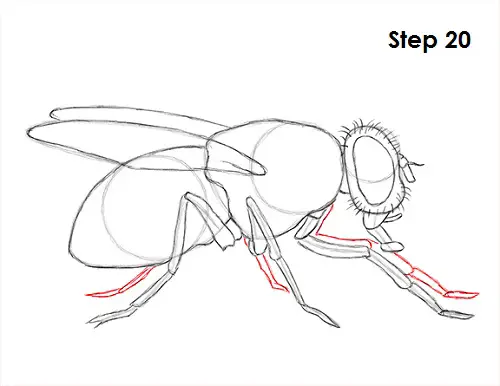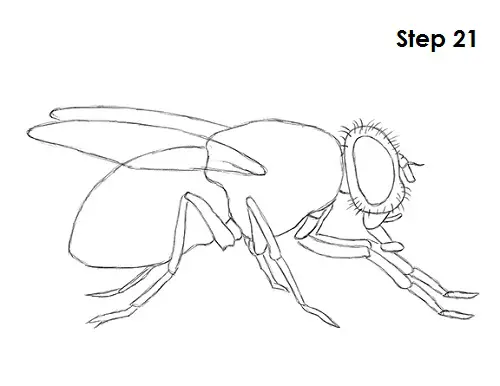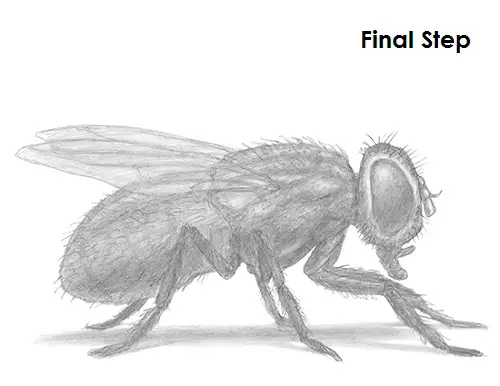
Step 20: Draw the three legs on the other side of he fly's body by using the ones on this side as guides. The legs on the other side should be similar to the legs on this side, only smaller and thinner. Bend the legs and add the segments just like with the legs on this side. Be sure to not overlap the lines.

Step 21 (optional): For a cleaner look, erase as much as you can of the initial guide lines. Don't worry about erasing all of the guides. It's okay to leave some behind. Re-draw any final sketch lines that you may have accidentally erased.

Final Step: Add some shading to your fly drawing to give it more dimension and volume. Pick the direction of the light source so that the shadows are consistent with it. Don't worry too much about the shading if you're going to add more value to your fly drawing later.
Add a cast shadow underneath. This helps ground the fly so it doesn't appear to be floating. Use a darker value near the middle of the shadow and a lighter value along the edge for the shadow's diffusion.
You can add even more value throughout your fly drawing for extra detail. Make the top area of the compound eye lighter to represent the shiny texture. Vary the pressure on your pencil to get different degrees of tonal value. Add the value lightly at first, then gradually build up to the level of darkness that you want. Alternate between light and dark value on the thorax to get the distinctive striped pattern of a housefly.You can also color your drawing green or blue for the metallic shiny texture of a green or blue bottle fly.
Vary the pressure on your pencil as you shade the thorax to create a series of bumps and bulges. Shading can be time-consuming, so be patient and take breaks. Use quick, short strokes within the thorax to represent the hair found all over the fly's body. Move on to shading the abdomen when you finish up with the thorax. Continue shading the abdomen and add the hair using quick, short strokes. Notice that the shading overlaps the wings because they are see-through. Draw some curved lines within the shape of the wings to represent the veiny texture. Add a very light value to the wings, as they are mostly transparent. Use a darker value when shading the fly's legs. Add the hair on the legs using quick, short strokes and don't forget to pause the "How to Draw a Fly" video after each step to follow at your own pace.
Thanks for watching! Subscribe to the How2DrawAnimals YouTube Channel for a new tutorial every Tuesday.
To learn how to draw popular cartoon characters, visit EasyDrawingTutorials.com.







